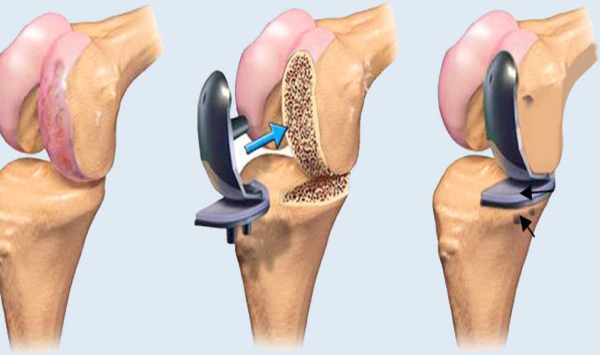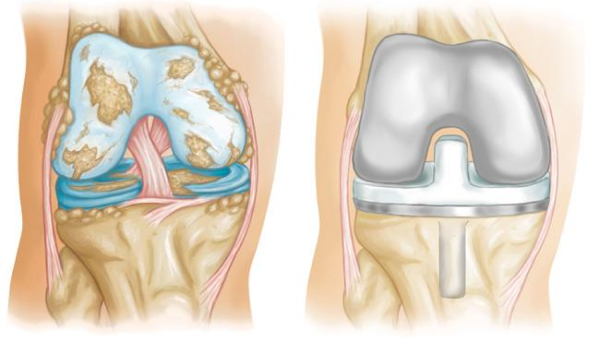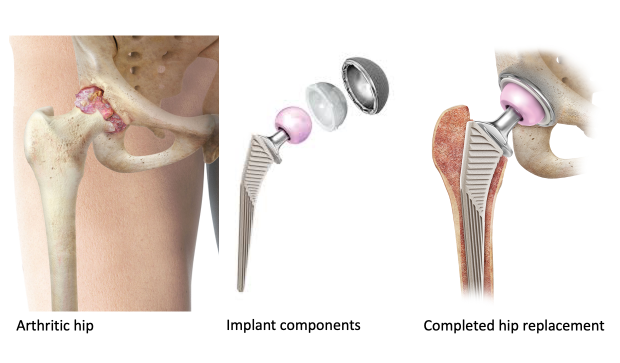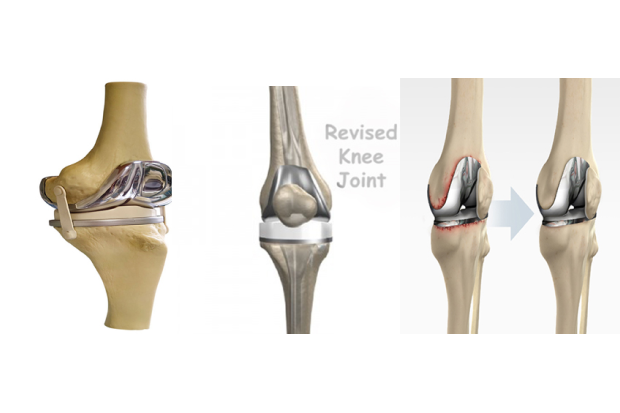Joint replacement is a surgical procedure in which a damaged joint is replaced with a prosthesis (an artificial joint). This surgery is typically performed to relieve pain and restore function in joints affected by severe arthritis or other. Joint replacement surgery is a significant medical procedure that requires careful planning, a skilled surgical team, and a commitment to rehabilitation. With advancements in surgical techniques and prosthetic materials, many patients achieve excellent outcomes and enjoy an active, pain-free life post-surgery. However, like any major surgery, joint replacement carries risks such as infection, blood clots, and implant failure, making thorough preoperative evaluation and patient education crucial. As medical technology continues to evolve, the future of joint replacement looks promising, with ongoing research aimed at further enhancing the durability and performance of prosthetic joints.

Joint Replacement
Knee Replacement
Knee replacement, also known as knee arthroplasty, is a surgical procedure designed to replace the weight-bearing surfaces of the knee joint to relieve pain and disability, most commonly due to osteoarthritis. The procedure involves the removal of damaged cartilage and bone from the knee joint, which are then replaced with metal and plastic components designed to replicate the knee's natural movement. There are different types of knee replacements, including total knee replacement (TKR) and partial knee replacement (PKR), with the choice depending on the extent of the damage within the knee. Advances in knee replacement surgery, such as minimally invasive techniques, subvastus knee replacement and robotic-assisted surgery, have led to shorter recovery times, reduced pain, and improved alignment of the prosthetic components.


Hip Replacement
Hip replacement, or hip arthroplasty, is a surgical procedure that involves replacing a damaged or diseased hip joint with a prosthetic implant. This procedure is most commonly performed to relieve severe pain and improve function in patients suffering from conditions such as osteoarthritis, rheumatoid arthritis, avascular necrosis or hip fractures. During the surgery, the damaged bone and cartilage are removed and replaced with components made of metal, ceramic, or plastic. These components mimic the natural ball-and-socket structure of the hip joint, allowing for smooth movement. There are two main types of hip replacement: total hip replacement (THR), where both the acetabulum (hip socket) and the femoral head (thigh bone) are replaced, and partial hip replacement.
Revision Knee Replacement
Revision knee replacement, also known as revision knee arthroplasty, is a surgical procedure performed to replace a failed or worn-out knee implant from a previous knee replacement surgery. This procedure becomes necessary when the original knee replacement fails due to reasons such as infection, loosening of the components, instability, wear and tear of the implant, or persistent pain. The surgery involves removing the existing prosthetic components and replacing them with new ones. Revision knee replacements are typically more complex than primary knee replacements due to factors such as bone loss, scar tissue formation, and altered joint anatomy from previous surgeries. Surgeons may use specialized implants, bone grafts, or other techniques to address these challenges and achieve stability and function in the knee joint. Patients undergoing revision knee replacement often experience longer recovery times and require more intensive rehabilitation compared to primary knee replacement surgery. Physical therapy is crucial to regain strength, mobility, and range of motion in the knee joint.


Revision Hip Replacement
Revision hip replacement, also known as revision hip arthroplasty, is a surgical procedure performed to replace a failed or worn-out hip implant from a previous hip replacement surgery. This procedure becomes necessary when the original hip replacement fails due to reasons such as infection, loosening of the components, dislocation, fracture around the implant, or wear and tear of the prosthetic components over time. The surgery involves removing the existing prosthetic components, including the acetabular cup (hip socket) and femoral stem (thigh bone), and replacing them with new components. Revision hip replacements are typically more complex and challenging than primary hip replacements due to factors such as bone loss, altered anatomy from previous surgeries, and potential damage to surrounding tissues. Surgeons may use specialized implants, bone grafts, or other techniques to address these challenges and achieve stability and function in the hip joint. The goal of revision hip replacement is to relieve pain, improve mobility, and restore function, similar to primary hip replacement surgery. Patients undergoing revision hip replacement often experience longer recovery times and may require more intensive rehabilitation compared to primary hip replacement surgery. Physical therapy is essential to regain strength, mobility, and range of motion in the hip joint following surgery.